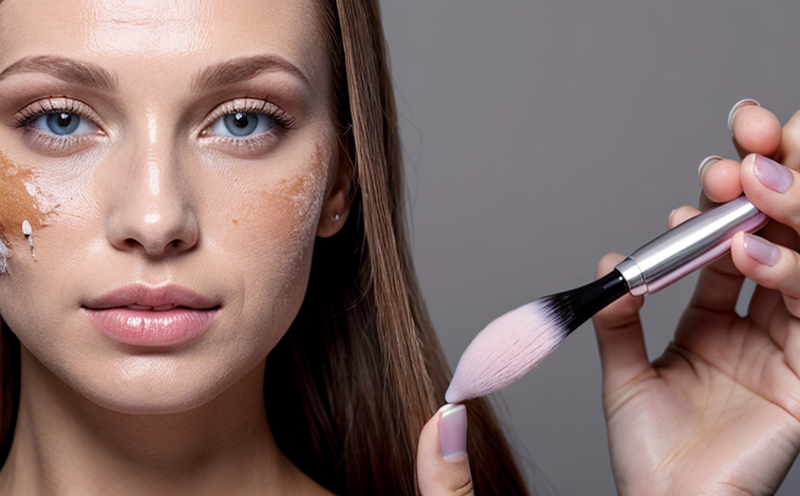CLP Regulation Compliance Testing for Cosmetics
The Classification, Labelling and Packaging (CLP) Regulation is a European Union regulation designed to ensure the safety of chemical substances and mixtures used in cosmetics. This regulation requires manufacturers to classify hazardous chemicals according to specific criteria, label them appropriately, and provide detailed information about their composition on the packaging.
Compliance with CLP ensures that cosmetic products are safe for consumers and meets regulatory standards set by the European Union. Failure to comply can result in product recalls, fines, or even the prohibition of a product from being sold within the EU market. This service focuses specifically on the testing required to ensure compliance with the CLP Regulation.
The process involves several steps, including hazard identification and classification, label content determination, safety data sheet preparation, packaging information review, and submission of documentation to regulatory bodies like ECHA (European Chemicals Agency).
Our team of experts uses state-of-the-art laboratories equipped with the latest analytical instruments and software to conduct these tests. Our services cover a wide range of cosmetic products such as lotions, shampoos, makeup, and perfumes.
In addition to testing for physical and chemical properties, our laboratory also assesses biological hazards, including allergens and irritants. We adhere strictly to international standards like ISO 10993-1:2018 and EN 71-3:2016 to ensure accurate results.
| Standard | Description |
|---|---|
| CLP Regulation (EC) No 1272/2008 | The core regulation governing the classification, labelling, and packaging of substances and mixtures. |
| ISO 10993-1:2018 | This standard outlines biological evaluation methods for medical devices. It is often referenced in CLP testing to ensure safety assessments are comprehensive. |
| EN 71-3:2016 | Specifically addresses the requirements for toys and cosmetics, ensuring they do not contain harmful substances at levels that could pose a risk. |
To ensure accurate classification under CLP, we use advanced analytical techniques such as gas chromatography-mass spectrometry (GC-MS), high-performance liquid chromatography (HPLC), and inductively coupled plasma mass spectrometry (ICP-MS). These methods allow us to identify even trace amounts of hazardous substances present in cosmetic products.
- Gas Chromatography-Mass Spectrometry (GC-MS): Used for the detection and quantification of volatile organic compounds and other small molecules.
- High-Performance Liquid Chromatography (HPLC): Ideal for separating complex mixtures, particularly those containing polar compounds like surfactants or preservatives.
- Inductively Coupled Plasma Mass Spectrometry (ICP-MS): Provides accurate quantification of trace elements and metals in cosmetic samples.
The testing process begins with thorough sample preparation, which may involve extraction methods tailored to the type of product being analyzed. Once prepared, the samples undergo rigorous testing using our state-of-the-art instrumentation. The results are then interpreted by our team of experienced scientists who ensure that all classifications and labeling requirements align with CLP regulations.
Our comprehensive approach ensures not only compliance but also provides valuable insights into potential risks associated with each product. This information can be used to improve formulations, enhance safety profiles, or make adjustments where necessary before commercial release.
Applied Standards
| Standard | Description |
|---|---|
| CLP Regulation (EC) No 1272/2008 | The core regulation governing the classification, labelling, and packaging of substances and mixtures. |
| ISO 10993-1:2018 | This standard outlines biological evaluation methods for medical devices. It is often referenced in CLP testing to ensure safety assessments are comprehensive. |
| EN 71-3:2016 | Specifically addresses the requirements for toys and cosmetics, ensuring they do not contain harmful substances at levels that could pose a risk. |
Environmental and Sustainability Contributions
In the pursuit of environmental responsibility, our CLP compliance testing services also contribute positively to sustainability efforts. By ensuring that cosmetics are classified and labeled correctly according to CLP regulations, we help prevent the release of hazardous substances into the environment.
- Reduces waste by identifying potentially harmful ingredients early in the development process, allowing for their removal or reduction from formulations.
- Promotes safer disposal practices through accurate labeling and classification, which informs proper handling and recycling protocols.
- Encourages the use of alternative testing methods that minimize animal testing where possible, aligning with broader industry goals towards more humane R&D processes.
Use Cases and Application Examples
The application of CLP compliance testing extends beyond just ensuring regulatory adherence; it plays a crucial role in the development, manufacturing, and marketing of cosmetic products. Here are some specific use cases:
- New Product Launches: Ensuring that new formulations meet all required classifications before market release.
- Ingredient Substitution: Assessing the impact of substituting one ingredient for another in terms of safety and compliance with CLP.
- Market Expansion: Adapting existing products to fit different regulatory requirements across various markets, including EU member states.





